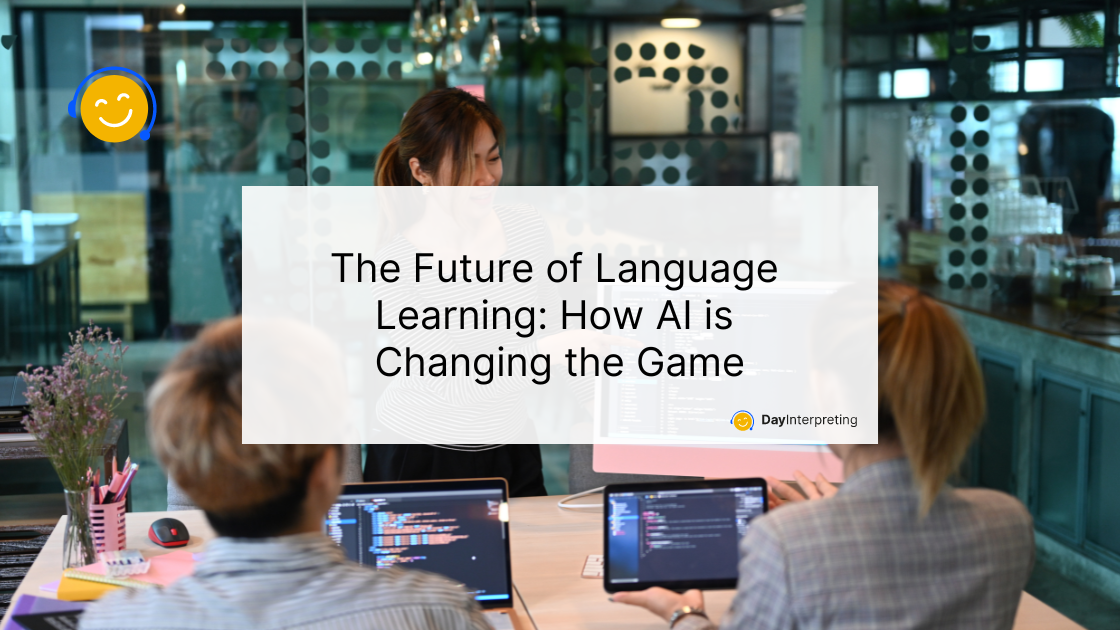Language learning has always been an exciting journey. People have used books, audio tapes, language classes, and even trips to foreign countries to learn new languages. But now, there’s a new player in the game: Artificial Intelligence (AI). AI is transforming the way we learn languages, making it easier, faster, and more fun. Let’s dive into how AI is changing the future of language learning!
What is AI and How is it Tied to the Future of Language Learning?
Before we explore how AI is changing language learning, let’s understand what AI is. Artificial Intelligence is a type of technology that allows machines to think and learn like humans. AI can understand speech, recognize images, and even make decisions. It’s like having a smart robot that can help you with many tasks.
Personalized Learning Experience
AI is making language learning more interactive and engaging through apps like Duolingo, Babbel, and Rosetta Stone. These apps use AI to tailor the learning experience to your needs. If you’re struggling with a concept, the app will provide more practice. If you’re progressing quickly, it will move you on to the next topic. It’s like having a personal tutor who understands your learning pace and needs.
Real-Time Feedback
AI can also give real-time feedback on your pronunciation. Have you ever tried to say a word in a new language and wondered if you were saying it correctly? AI can listen to your pronunciation and tell you if you’re right or wrong. Apps use speech recognition technology to analyze your speech and provide instant feedback. This way, you can practice speaking and improve faster.
Virtual Language Tutors
Chatbots as Tutors
AI has introduced a convenient and flexible way to practice language skills: AI-powered chatbots. These virtual language tutors can engage in conversations with you in the language you’re learning. They understand your speech and respond accordingly, providing a human-like interaction. The best part? They’re available 24/7, allowing you to practice at your convenience.
Interactive Lessons
AI can create interactive lessons that are more engaging than traditional methods. For example, some apps use augmented reality (AR) to make learning more immersive. You can point your phone at objects around your house, and the app will tell you their names in the language you’re learning. This makes learning new words fun and helps you remember them better. Moreover, understanding how to scan a QR code on an iPhone opens up a world of interactive learning possibilities.
Breaking Down Language Barriers
Instant Translation
AI is also breaking down language barriers with instant translation tools. Apps like Google Translate use AI to translate text, speech, and even images in real-time. This can be incredibly useful when traveling or communicating with someone who speaks a different language. You can simply speak into your phone, and the app will translate your words into the desired language. This makes communication easier and helps you learn new words and phrases on the go.
Voice Assistants
Voice assistants like Siri, Alexa, and Google Assistant can also help with language learning. You can ask them to translate words, define terms, or even practice simple conversations. These voice assistants use AI to understand and respond to your requests, making them a handy tool for language learners.
The Future of AI in Language Learning
More Advanced Personalization
The future of AI in language learning looks promising. As AI technology continues to improve, we can expect even more advanced personalization. AI will be able to analyze your learning habits and create a customized learning plan that suits your needs perfectly. This will make learning more efficient and enjoyable.
Virtual Reality (VR) Language Immersion
Imagine being able to practice a new language in a virtual world. With advancements in virtual reality (VR) technology, this could become a reality. You could put on a VR headset and find yourself in a virtual city where everyone speaks the language you’re learning. You could interact with virtual characters, order food at a virtual restaurant, or ask for directions on a virtual street. This immersive experience would make learning feel like a real adventure.
AI in the Classroom
AI will also play a bigger role in classrooms. Teachers can use AI tools to monitor students’ progress and identify areas where they need help. AI can also assist in grading assignments and providing feedback, giving teachers more time to focus on teaching. This will create a more effective and supportive learning environment for students.
Wrapping Up on the Future of Language Learning
AI is revolutionizing the way we learn languages. From personalized learning experiences and real-time feedback to virtual tutors and instant translation, AI is making language learning more accessible and enjoyable. As technology continues to advance, the future of language learning looks brighter than ever. So, whether you’re just starting to learn a new language or looking to improve your skills, AI-powered tools can help you achieve your goals. Embrace the future of language learning and let AI be your guide on this exciting journey!





0 Comments